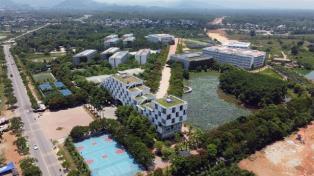The Alliance for Research and Training in Semiconductors and Microelectronics (ARTSeMi) for the 2025–30 period was officially launched at a forum in HCM City on Thursday.

HCM CITY — The Alliance for Research and Training in Semiconductors and Microelectronics (ARTSeMi) for the 2025–30 period was officially launched at a forum in HCM City on Thursday, marking a key step in Việt Nam’s efforts to strengthen capacity in one of the world’s most strategic industries.
Co-organised by the city’s Department of Science and Technology and the HCM City Semiconductor Industry Association (HSIA), the forum gathered policymakers, scientists, universities and businesses to discuss collaboration and policy solutions for nurturing high-quality talent and driving innovation.
ARTSeMi brings together 15 founding members, including universities, research institutes, enterprises and organisations.
Its activities will focus on technical information sharing, joint research projects, co-publications, intellectual property registration, training programmes, technology transfer and promoting international cooperation.
Speaking at the event, Nguyễn Hữu Yên, deputy director of the city’s Department of Science and Technology, underlined the sector’s importance in the Fourth Industrial Revolution, where science, technology, innovation and digital transformation are the key drivers of growth.
“In today’s global economy, the semiconductor industry functions as its lifeblood, forming the backbone of advanced technologies such as artificial intelligence (AI), the Internet of Things (IoT), big data and smart devices,” he said.
He stressed that as the country’s economic and innovation hub, the city carries a pioneering responsibility to lead semiconductor development, not only for the southern key economic region but also nationwide.
Experts and stakeholders also discussed the challenges facing the industry and recommended policy measures to accelerate training, strengthen research collaboration and expand technology applications.
Developing a breakthrough workforce in areas such as chip design, semiconductor technology, IoT and AI was highlighted as a priority.
The semiconductor and electronics sector is already a key pillar of the economy.
In 2024, the country’s electronics exports exceeded US$134.5 billion, accounting for more than one-third of the nation’s total export turnover.
In the first five months of 2025, the sector recorded 39 per cent year-on-year growth.
The alliance was established in line with the Government’s Resolution No. 57-NQ/TW and Decision No. 1018/QĐ-TTg, which outline Việt Nam’s national semiconductor development strategy through 2030 with a vision to 2050.
Under the plan, the country aims to train at least 50,000 high-quality semiconductor professionals by 2030, with HCM City expected to contribute around 9,000, particularly in chip design, fabrication and related technologies.
Yên reaffirmed the city’s commitment to supporting innovation, attracting scientific talent, and creating favourable conditions for both domestic and foreign investors in high-tech industries.
Nguyễn Văn Hiếu, chairman of HSIA, said the establishment of the alliance was an urgent necessity, stemming from the reality of the digital economy, where the semiconductor and electronics industries cannot develop effectively without a coordination mechanism among organisations, enterprises, research institutes and universities.
“The alliance serves as a vital bridge, connecting the voices of businesses and experts at home and abroad with State management agencies to build practical, enabling policies, while creating a flexible operational mechanism to accelerate research and development (R&D) projects,” he said. — VNS



